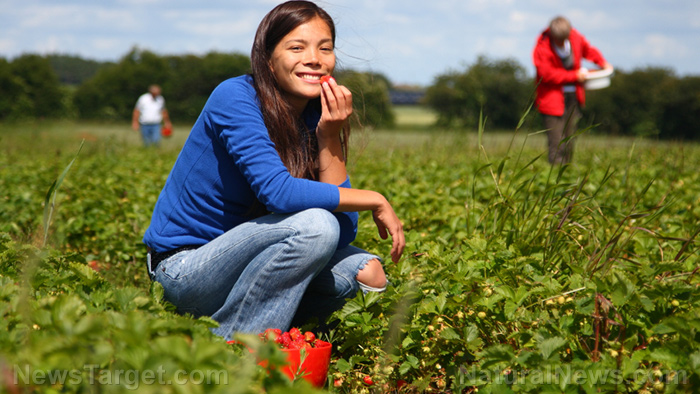Trees help augment a number of contingency plans for farmers and homesteaders
02/06/2019 / By Jhoanna Robinson

A study that was titled, “Effects of local institutions on the adoption of agroforestry innovations: evidence of farmer managed natural regeneration and its implications for rural livelihoods in the Sahel” that was published in the journal Springer Open showed that trees are a great help to farmers and homesteaders in more ways than one.
The study sought to assess how current local formal and informal institutions influence farmer-managed natural regeneration (FMNR) practices, which are low-budget and sustainable land restoration mechanisms that are employed to fight poverty and hunger among poor subsistence farmers in developing countries by boosting food and timber manufacture and adaptation to extreme climates.
It also aimed to gauge the benefits of such practices on livelihoods.
The study was utilized to measure the effects of a set of covariates (or variables that can be indicative of a study’s outcome) on FMNR as well as the impacts of that practice on income, cereal production, and caloric intake via data collected from 1,080 rural households in Niger, Senegal, Burkina Faso, and Mali.
The study showed that regeneration of trees on farms is essential as a practice and safety-net by being a source of caloric intake and diet, cash income, and crop supplements all over the dryland areas of West Africa. It also concluded that the effects of institutions in promoting the development of FMNR practices in the Sahel region vary; that is, in places with well-defined formal and informal institutions, people seemed to have grasped a more effective collaboration attitude with the local government by creating plans for good management and protection of natural resources including FMNR practices.
On the other hand, in areas where these initiatives are being linked to governmental institutions, raising incentives towards a better management of natural resources is a harder venture.
The developing world’s dry areas cover around three billion hectares and are home to around 2.5 billion people, which is equivalent to 41 percent of the Earth’s land area and over one-third of its population. Of this population, 16 percent dwells in chronic poverty.
To begin with, drylands already have a limited amount of natural resources and are already prone to serious environmental consequences, which can be exacerbated by climate change. The West African Sahel is one of the five developing-country regions where dryland agriculture encounters serious problems.
Two of the biggest issues that confound Sahelian countries today are decreasing poverty (especially among rural households) and avoiding climate shocks by safeguarding the ecosystems, which provide primary services for a growing population whose existence depends to a large extent on a combination of subsistence rain-fed crop farming and livestock rearing, coupled with the gathering of agroforestry tree products such as grasses, leafy vegetables, condiments, fruits, nuts, and wood.
Earlier movements to regreen the Sahel
Participants under the theme “Agroforestry as a basis for food security and environmental resilience in Niger and the Sahel,” which took place from January 17 to 19, 2011, were of the opinion that it is necessary to compile and disseminate best management techniques to increase tree density among farmers.
They mentioned that strong political will, along with farmers’ receptiveness to change and new ideas as promising opportunities to regreen the Niger and the Sahel, like what happened in the regions of Zinder and Maradi, which are now more than 4.8 million hectares greener due to FMNR, as compared to more than 20 years ago. (Related: Rising CO2 levels are re-greening Africa’s deserts, bringing abundance that lifts people out of poverty.)
The workshop was organized by the World Agroforestry Centre, in cooperation with the Nigerien Ministry of Environment; African Forest Forum; and the African Network for Agriculture, Agroforestry and Natural Resources Education.
According to then Nigerien Environment Minister Abdou Kaza, the government has rising concerns regarding aging parklands and the way people negatively use trees.
For his part, World Agroforestry Centre director-general Dennis Garrity said: “The Nigerien experience is certainly one of the most compelling success stories, in terms of improving sustainable land management in all of sub-Saharan Africa. The experience of Niger gives us confidence that it is possible to conceive, and achieve a positive transformation in farming livelihoods and environmental rehabilitation across the Sahel, notwithstanding the serious constraints that rural populations are facing in this challenging environment.”
For more stories on greenery and how it can affect the world we live in, visit GreenLiving.news today.
Sources include:
Tagged Under: Africa, agroforestry, dryland agriculture, ecosystems, environment, farming, green living, Niger, Sahel, sub-saharan Africa, tree regeneration, trees give life


















